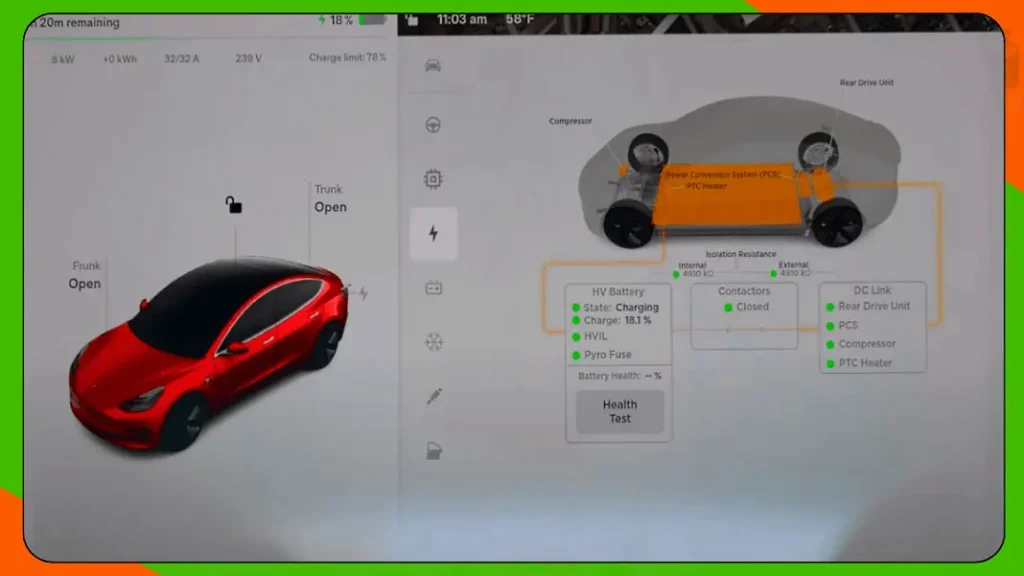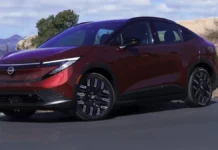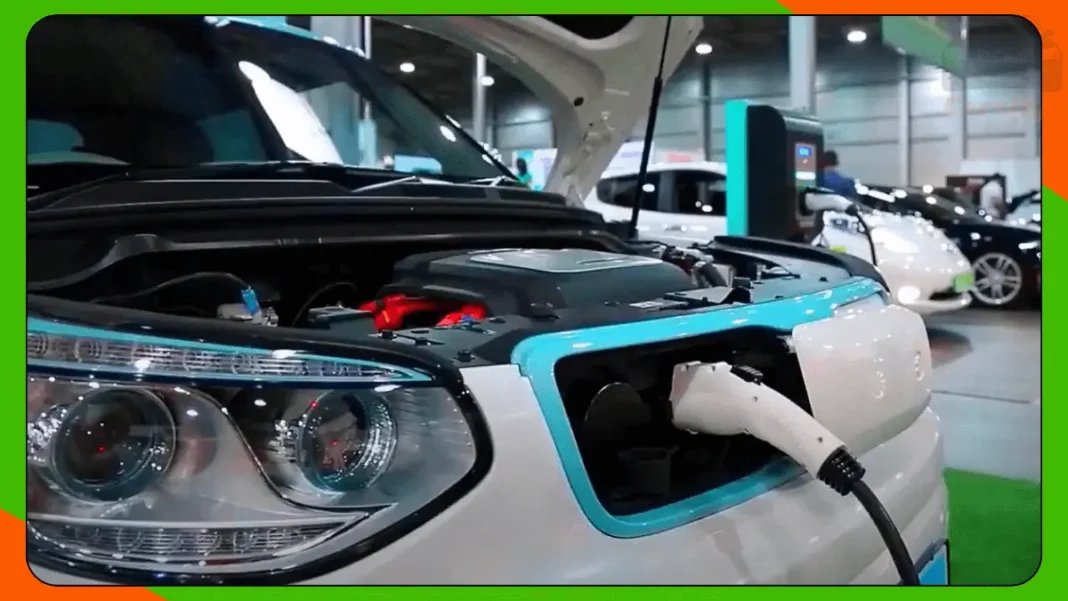Electric vehicles (EVs) are transforming how we approach sustainable travel, but owning one comes with questions about battery lifespan and maintenance. As the heart of your EV, the battery determines range, performance, and value retention. This guide covers everything you need to know about EV battery life, ways to preserve it, and the technology driving battery longevity. By understanding these aspects, you can make informed choices that maximize your investment.
Table of contents
What Is an EV Battery? Components and Importance
An EV battery, usually lithium-ion, powers electric vehicles with stored electrical energy. Unlike traditional car batteries, EV batteries are significantly larger and contain advanced technology to ensure safe, reliable operation. These batteries are designed for heavy-duty use, but their longevity depends on proper care and maintenance.

Key Components in EV Batteries
- Battery Cells and Modules: Cells are the basic units of an EV battery. Many cells together form a module, and modules combine to create a battery pack. Each cell has an anode, cathode, and electrolyte components that store and discharge energy.
- Battery Management System (BMS): The BMS monitors battery health, regulates voltage, and ensures safe operating temperatures.
- Thermal Management System: This system keeps the battery cool, preventing damage from excessive heat generated during charging and use.
- Connectors and Cooling Systems: Connectors provide power to the vehicle, while cooling systems manage temperature for optimal efficiency.
An efficient EV battery is critical to delivering high performance and range, helping make EVs a viable alternative to traditional vehicles.
How Long Do EV Batteries Last?
When it comes to EV batteries, lifespan is a top concern. The good news is that modern EV batteries are designed to last around 8–15 years, depending on several factors.
Average Lifespan of EV Batteries
Most manufacturers rate EV batteries for around 100,000 to 200,000 miles, equivalent to 8–15 years under typical usage. However, battery performance naturally declines over time due to usage and environmental factors. After a decade or so, EV batteries often still retain over 80% of their initial capacity, meaning the range may decrease, but the vehicle remains drivable.
Influencing Factors on Battery Lifespan
Several factors can affect the lifespan of an EV battery, including:
- Climate: EV batteries can degrade faster in extreme heat. Cold weather can also temporarily reduce battery range, although it usually doesn’t affect long-term health.
- Usage Patterns: Consistent long-distance driving or frequent high-speed travel places extra demands on the battery.
- Charging Habits: Rapid charging stations, while convenient, can lead to faster degradation if used excessively. Likewise, deep discharges and constant full charges can shorten battery life.
Battery Warranty and Performance Guarantees
Most EV manufacturers offer warranties ranging from 8–10 years or 100,000–150,000 miles. Warranties are beneficial as they cover potential early battery degradation, offering peace of mind. Brands like Tesla, Hyundai, and Chevrolet provide comprehensive battery warranties, and some even guarantee a certain level of capacity retention over the warranty period, making them an essential consideration when buying an EV.
Signs of EV Battery Degradation
No battery lasts forever, but certain signs indicate when your EV battery may be starting to lose capacity.

Recognizing Battery Degradation Symptoms
- Decreased Range: If you find yourself charging more frequently than when you first got the vehicle, this could indicate capacity loss.
- Slow Charging Times: A battery nearing the end of its lifespan may charge more slowly, which can impact daily driving routines.
- Dashboard Alerts: Many EVs come with built-in diagnostics that alert you to battery issues. These could include general battery health notifications or specific warnings about temperature or charging problems.
How to Monitor Battery Health
Using onboard diagnostics is one of the easiest ways to keep track of battery health. Many EV manufacturers also offer smartphone apps or interfaces that show battery capacity and charge cycles. Regular check-ups and diagnostic tests can give you a clearer picture of your battery’s state, allowing you to anticipate potential issues and maintain your EV’s performance.
Proven Maintenance Tips to Extend EV Battery Lifespan
Proper maintenance can significantly impact how long your EV battery stays functional and reliable. Here are some essential tips to help you prolong its life.
Optimal Charging Practices
- Avoid Full or Empty Charges: The ideal charge level is between 20% and 80% for daily driving. Charging to 100% or letting the battery drop below 20% can stress the battery over time.
- Limit Rapid Charging: While convenient, rapid charging generates heat, which can degrade your battery more quickly. Use Level 1 or 2 chargers whenever possible and reserve Level 3 fast-charging for occasional use.
- Regular Charging Routine: Keeping your battery at a moderate charge level on a daily basis can help maintain long-term performance.
Temperature and Climate Considerations
- Protect from Extreme Heat: Heat is one of the most significant factors in battery degradation. Park in shaded or covered areas during hot weather and avoid charging when the battery is overheated.
- Battery Care in Cold Weather: Cold weather impacts range but doesn’t typically harm battery health. Many EVs have battery heaters or thermal management systems to help with cold weather performance.
Choosing the Right Charging Infrastructure
Not all charging stations are the same, and using the right infrastructure can contribute to battery health. Choose charging stations that are compatible with your EV model and avoid uncertified or poorly maintained ones, which can affect charging efficiency.
Role of Battery Management Systems (BMS)
Battery Management Systems (BMS) are essential in managing battery performance, helping to optimize charging, and maintaining safe operating temperatures. A BMS tracks individual cell performance, regulates temperature, and prevents the battery from overcharging or overheating.
Impact of BMS on Battery Lifespan
A good BMS significantly improves battery longevity by balancing cells and controlling charge cycles. If one cell is weaker, the BMS ensures it doesn’t get overstressed, preserving overall battery health. Different EV brands implement unique BMS strategies to maximize battery life.
| Battery Management Systems Comparison | Tesla | Hyundai | Nissan |
|---|---|---|---|
| Thermal Management | Liquid-cooled for stability | Advanced air cooling | Passive cooling with fan |
| Charging Control | Adaptive charge limits | Smart charging algorithms | Regenerative braking balancing |
| BMS Features | Cell balancing, safety alerts | Thermal monitoring | Active battery life extension |
Tesla’s advanced BMS, for example, incorporates liquid cooling for improved performance in various climates, while Nissan’s Leaf employs a passive cooling system that is energy-efficient but requires attention to heat exposure.
The Future of EV Battery Technology
As electric vehicles gain popularity, battery technology continues to advance, promising longer-lasting, faster-charging options. Future EV batteries aim to address today’s challenges with lifespan, efficiency, and environmental sustainability.
Emerging Battery Technologies
- Solid-State Batteries: Offering more energy density and less risk of overheating, solid-state batteries promise longer life and shorter charging times. They’re still in development but could replace traditional lithium-ion batteries in the future.
- Graphene Batteries: Graphene-based batteries have faster-charging capabilities and better longevity, showing promise as a sustainable solution.
- Fast-Charging Technology: EV manufacturers are exploring ultra-fast chargers, aiming to reduce charging times to under 10 minutes.
Sustainability and Recycling Initiatives
EV batteries contain valuable materials like lithium, cobalt, and nickel. Recycling programs can recover these materials, reducing environmental impact and supporting sustainable battery production. Brands like Tesla and Nissan are developing battery recycling facilities and programs that focus on responsible battery disposal and reuse.
Conclusion
Owning an EV involves understanding the nuances of battery health, lifespan, and maintenance practices. By following best practices such as optimal charging routines, paying attention to temperature, and leveraging battery management systems you can extend the life of your EV battery and maximize the value of your vehicle. As battery technology continues to improve, the future promises even longer-lasting, more sustainable solutions that will make EV ownership more accessible and beneficial.
By staying informed and proactive, you’ll be well-prepared to enjoy the full potential of your electric vehicle for years to come.
Frequently Asked Questions (FAQ)
What Is the Typical Lifespan of an EV Battery?
Most EV batteries are designed to last 8–15 years or around 100,000–200,000 miles, depending on usage and maintenance.
How Can I Maintain My EV Battery?
You can maintain your EV battery by keeping charge levels between 20%–80%, avoiding frequent rapid charging, and protecting the vehicle from extreme temperatures.
Are EV Batteries Expensive to Replace?
EV battery replacement costs vary depending on the model and manufacturer. As battery technology advances, replacement costs are expected to decrease in the future.
What Are the Signs of Battery Degradation?
Common signs include reduced range, slower charging times, and alerts on your dashboard. Monitoring these indicators can help you gauge when it may be time to check battery health.





















